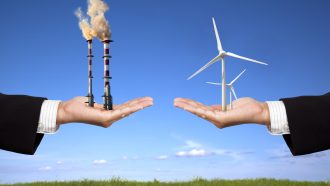Renewable Energy in Nigeria: Realistic or Not?
Renewable energy is the next way to go for Nigeria to solve its energy crises. It is not strange to Nigerians to go for weeks on end without electricity. In actual fact, there are several Nigerians that had not enjoyed electricity in their homes for years after lots of transformer field repairs to enhance the infrastructure. It is clear to all and sundry that the conventional method via which Nigeria generates electricity is presently not effective.

The Nigerian power generating plants run on coal, gas and diesel. Pipeline vandalism had led to reduction in the power generation from these plants and it is having attendant negative impact on the Nigerian economy. This then brings the need for renewable energy source to the fore and makes it the clear solution to the Nigerian energy crises. Renewable energy does not depend on crude oil to run; consequently, pipeline vandalism will not have any impact on it whatsoever. Follow solarkraft for more information.
Various forms of renewable energy sources
Some of the common renewable energy sources available are listed below:
• Hydrogen & fuel cells
• Ocean energy
• Hydropower
• Bio-energy, bio-products, bio-power and bio-fuels
• Geothermal energy, geothermal heat pumps, geothermal direct use and geothermal electricity production
• Wind energy and
• Solar energy, solar electricity, solar hot water and photovoltaic systems
Nigeria is presently using the hydropower source of renewable energy and some of the dams in Nigeria are:
• Ikere Gorge Dam
• Jebba dam
• Kainji dam
• Kiri dam
• Oyan river dam and
• Shiroro dam
Lack of maintenance is one of the key issues leading to the inability of Nigeria to maintain its dams and to keep them in utmost working conditions. Many of the equipments at the dams are not properly maintained. Lack of maintenance leads to need for huge capital on repair.
Another problem facing the Nigerian electricity generation via renewable sources is lack of investors in this area. Many individuals are not inclined towards putting their hard earned money in the sector and this seems responsible for its seeming perpetual state of doldrums. Many of the equipments in these dams have been there since inception-close to 80 years ago- and it will be akin to insensitivity to expect these old equipments to function in the same manner as new ones.
Inability of Nigeria to maintain the renewable power plants she has presently casts doubts on her ability to maintain any other renewable source of energy. This then cast doubts on the possible economic growth of Nigeria in the near future. Improvement in maintenance culture will however impact the sustainability of the renewable energy sources in Nigeria towards solving the prevalent energy crises.
Conclusion
In order to maintain Nigeria’s renewable energy sources, the Nigerian government needs to bring into consideration two forms of maintenance vis-à-vis the corrective and preventive forms of maintenance. The preventive aspect of maintenance has to do with planned outages and condition monitoring of those renewable energy power plants towards avoiding faults in the power plants. The corrective form of maintenance occurs post-fault and must be implemented timely enough for improved effectiveness.